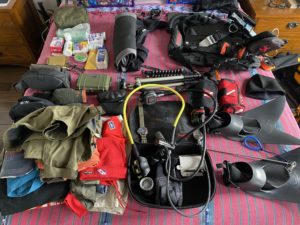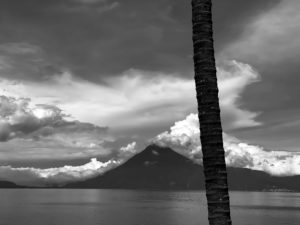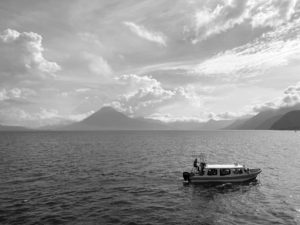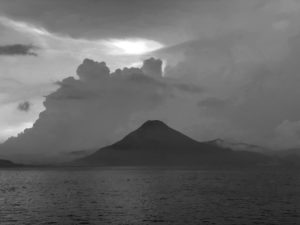GUATEMALA CITY — This is my list for the trip to Mount Kailash, a trip I don’t know when or if I will make. They say the mountain calls you when you are ready to hear and lets you make the pilgrimage to circumambulate its base when the time is right. I do find it strange, at the very least, that in a life spent reading accounts of exploration and journeys to sacred and far away places, I only heard of Kailash a few years ago. It is, of course, even more possible that I did read the name Kailash but wasn’t ready to take notice. This is a mountain and a region famous for holding secrets and revealing new dimensions and layers of meaning depending on the state and intentions of the traveler. Buddhists, Hindus, and adherents of the ancient Bon religion of Tibet all believe Kailash is a place of great power and sanctity, where the veil between worlds is thinner and the initiated can view geographies hidden to the common traveler.
Regardless, Kailash is a difficulty place to reach, even in this modern age. The geography of the Subcontinent and surrounding regions is a physical geography of rivers and mountains, deserts, forests, and cities but it is arguably unique in its overlying sacred geography, a network, both visible in the form of trails and temples and the invisible web of faith and scripture that connects them. The faithful spend years, sometimes their entire lives, following these pilgrim trails and visiting these sites and I would argue that in this whole web, Mount Kailash is the farthest point, the end (and perhaps a new beginning) of all those trails.

Fjällräven Anorak #8, Filson Watch Cap, Oakley Clifden sunglasses, Casio Pathfinder Tough Solar Triple Sensor Titanium watch, Black Diamond Alpine FLZ trekking poles.
What is the point of this, you ask? What does this have to do with a secular list of gear after all? Everyone’s packing list is different, to be sure. I have never, obviously, been to Kailash (as I write this) but this list is based on my earlier experience trekking in the Himalayas to the headwaters of the Ganges and years spent traveling and backpacking. It is based on my friend Chris Urban’s trek to Everest Base Camp and on the written experiences of travelers from the earliest Himalayan explorers to contemporary travel bloggers. It is about being prepared and being ready. People fall too often into the trap of never being ready because it isn’t time right now. This doesn’t mean you should have a pack stuffed with clothes getting wrinkled and mildewed on the off chance that someone orders you out the door and off to the Himalayas in the next five minutes. If that’s what your life is like your bag is already packed… But it does mean, if you really want to go somewhere, to be prepared to fill that pack, to know about where you are going, to have a valid passport and know what other visas and permissions you will need, how to get them and how long they will take.
The other perk of being prepared for a trip is that it likely makes you prepared for other trips. I spent a year or more getting ready to go to Kailash. Covid came and postponed that journey indefinitely but much of the gear I put together will serve me very well trekking and climbing volcanoes in Guatemala. The books I read on Kailash and Tibet and Buddhism taught me things I never expected to learn and took me on pathways I didn’t expect to take. So maybe Kailash is closed for reasons of pandemics and politics but also, perhaps, it is telling me simultaneously that I am ready to listen but not yet ready to go.
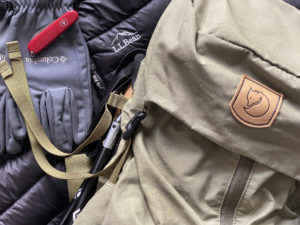
Fjällräven Absiko Hike 35 liter pack, L.L .Bean hooded 850 down jacket, Columbia gloves, Victorinox pocket knife.
So here, finally, is the list. On one level the gear is important as it keeps the wind and rain and cold out, keeps the sun from burning your head and eyes. On the other hand it is just stuff, just a small part of everything you need to do to get to that mountain or whatever mountain is calling to you. Your list should include a lot more than jackets and boots and completing the list is a journey and meditation of its own, the very beginning of the long trail.
Philosophy aside, the right gear is critically important to getting you safely through any journey and home again. Himalayan (or Trans-Himalayan) trekking is all about layers. Storms and cold fronts can appear seemingly out of nowhere and conversely it can be quite hot, particularly when one is putting in a lot of physical effort. When we left the ashram at Bhojawasa before dawn to hike the last few miles to the Gangotri glacier, I had on every layer including a pair of heavy gauntlets my friend Chris leant me after he wore them on the EBC trek. I was grateful for them all. Literally minutes after the sun broke over the valley’s rim we had to stop and remove most of those layers or it would have been intolerably hot.
As well, most of the Kailash trip and most of our trip into the Garwhal Himalayas wasn’t on the trail or in tents or primitive ashram cells but in a car and hotel rooms that ranged from basic to rather nice. Along the trails themselves it is likely you will hire a porter to carry some of your heavier, bulkier gear, and don’t forget the days on the plane and in transit spent in Kathmandu and elsewhere. Some clothes and things can be left behind with a hotel or the travel agency in Nepal for instance. Cotton may kill on cold, wet trails but I sure think it’s comfortable next to your skin on a long flight on a climate controlled jet. With this list I will work my way from out to in—base layers to outer layers and up from socks to hat. If you have any specific questions please email me and I will do my best to answer them.
KAILASH PACKING LIST
5 pairs Darn Tough Boot Cushion Socks
1 pair Smartwool heavyweight mountain socks
Altra Lone Peak trail shoes
Columbia Newton Ridge waterproof boots
5 pair merino wool boxer briefs
Cabela’s base layer (long sleeve top and bottoms)
1 pair Kuhl Renegade shorts
1 pair lightweight nylon swim trunks
2 pair Mountain Hardwear AP pants
1 pair fleece-lined Eddie Bauer trekking pants
1 Crosstac D-Belt 2 with hidden money pocket
3 Smartwool merino t-shirts
2 black cotton t-shirts for general wear
1 Smartwool long-sleeve merino hoodie
1 wool tweed Orvis vest
1 Fjallraven Buck fleece
1 850 fill L.L. Bean hooded down jacket
1 Fjallraven Anorak #8
Ball cap
REI Boonie hat
Filson wool watch cap
Lightweight Columbia gloves
Black Diamond Mercury Mitts
Black Diamond Snow gaiters
Rain pants
Oakley Clifden sunglasses
Oakley Frogskins sunglasses
Military style nylon poncho
Casio Pathfinder Triple-sensor Tough Solar titanium watch
Toiletries in an Osprey hanging toiletry case
Emergency first aid kit with tourniquet, field dressings, gauze, gauze with clotting agent, moleskin for blisters, Neosporin spray, duct tape, and bandaids for owies
Swiss Army knife
Medicines including ibuprofen, aspirin, probiotics, Diamox, activated charcoal, Allegra, Benadryl, a course of Zithromax, a course of Cipro, and Airborne effervescent tablets, two per day, Gatorade energy chews.
2 Nalgene Canteens and Aquamira water purification tablets
Hydration sleeve
Black Diamond Alpine FLZ aluminum trekking poles
Headlight (Fenix E12AA flashlight) on a NiteEyes head strap + extra Phenix E12 light and 2 LED thumb lights
Nemo Sonic 0-Degree mummy bag
Nemo air mattress
Bivvy sack
Extra AA batteries in a Storacell case
Anker Power Core
Paperback books to read, trade, and leave behind
Moleskine Journal and several Field Notes booklets
Pens, pencils
LUGGAGE
Fjallraven Abisko hike 35
Filson Medium Field Duffel with waterproof liner
L.L. Bean Large rolling duffel
Domke F3x with camera gear
Mountainsmith waist pack
A NOTE ON LUGGAGE:Â Along the trail it is likely you will hire a porter. If you will be carrying all your own gear, sleeping in a tent, and cooking your own food, your list will be quite different than this one. This list is designed for the bulk of your gear to be carried by someone else from camp to camp, tea house to tea house, ashram to ashram or a combination thereof.
Porters and pack animals do not like duffles with frames and wheels but I do. The L.L. Bean Large Rolling Duffel (a mainstay of our on-the-move family) is tough, capacious yet easy to pull through airports with its wheels and extendable handle. It is also a near perfect size in that, while it is possible to overload and exceed weight limits if you are transporting your collection of lead blocks, loaded with normal items, it is generally right on weight. The rolling duffel will get me and my gear to Kathmandu then stay with the trekking agency along with some other items during the duration of the trek.
The soft-sided Filson duffel is what the porter will carry, with my extra clothing, sleeping bag, and anything I don’t need on the trail with me during the day. During the day you typically carry a day pack of some sort while the porters carry the rest of your gear in soft-sided duffels, either strapped to a frame or onto a yak. The day pack I chose is an internally framed 35 liter pack from Swedish company Fjallraven. This pack will hold your water, snacks, first aid kit, bivvy sack, and serve to hold the layers you take on or off during the day. I will carry my camera gear on the plane, around town, and in the car in my trusty Domke F3x but while hiking my camera will be either on a Peak Design clip attached to my pack strap, around my neck, or in case of inclement weather, in the waist pack which will also hold any extra lenses.
